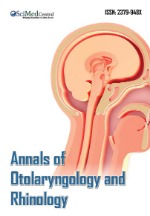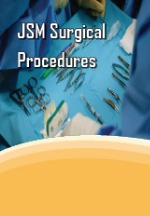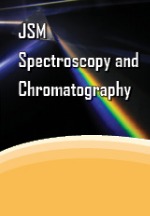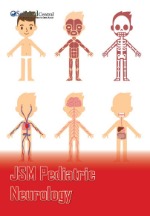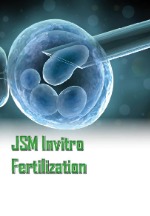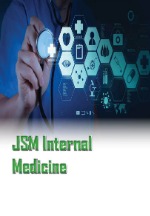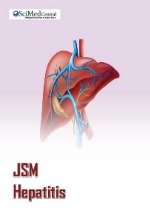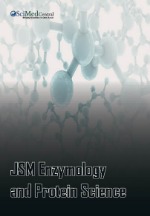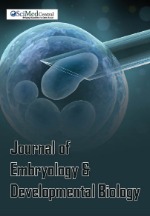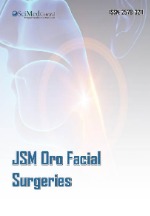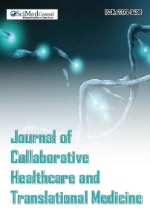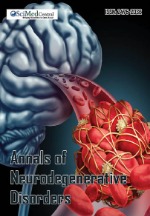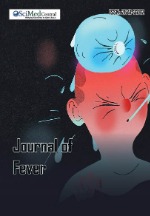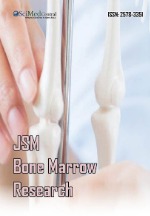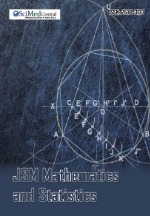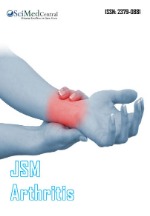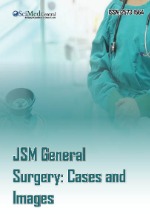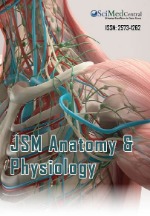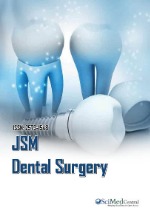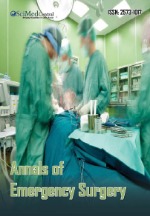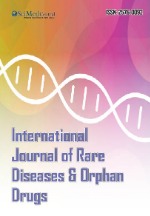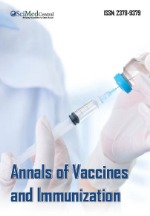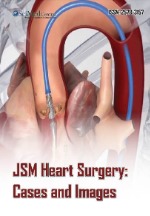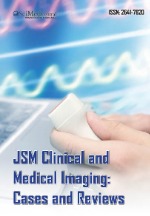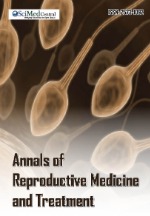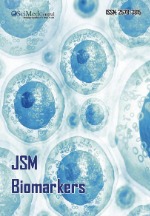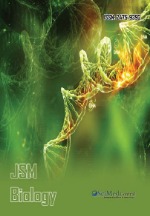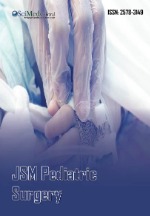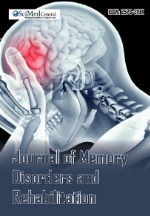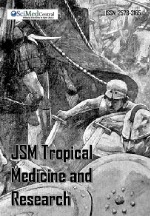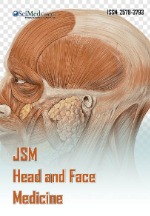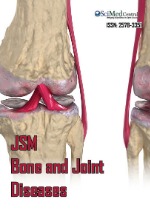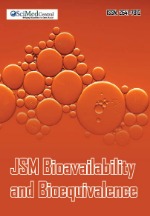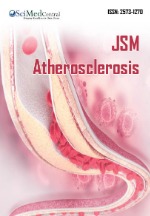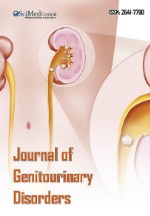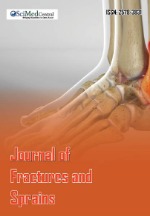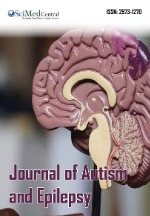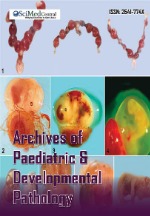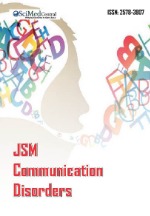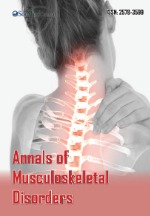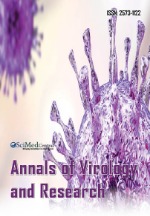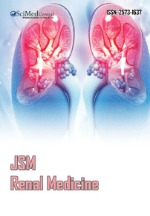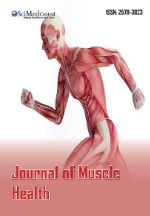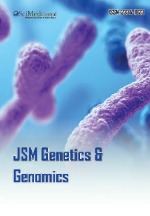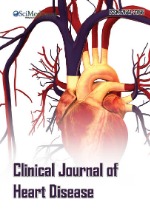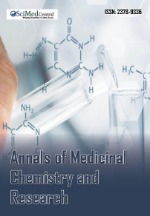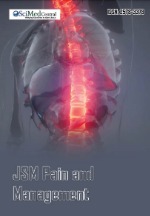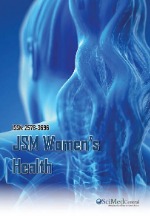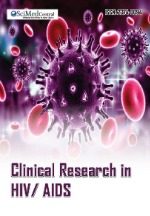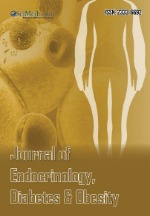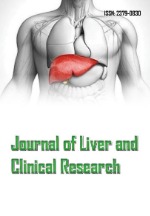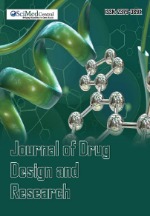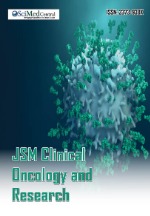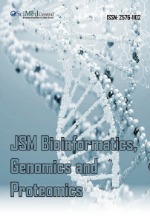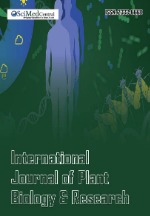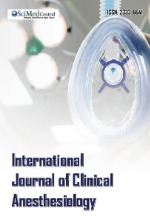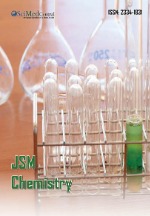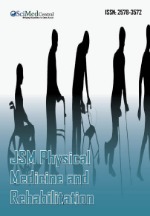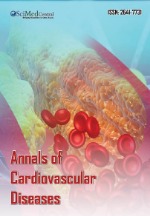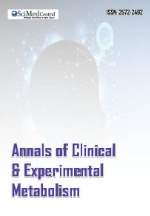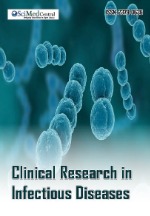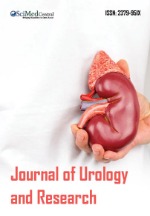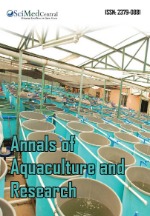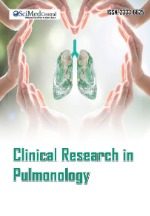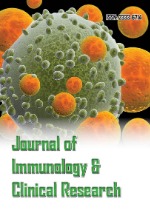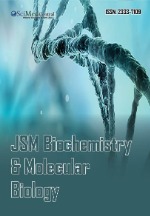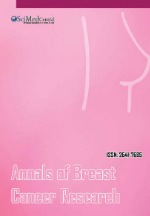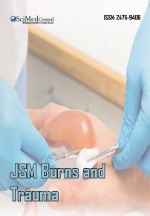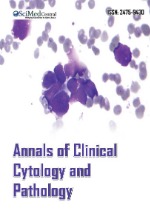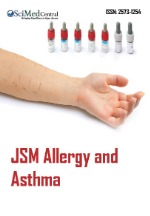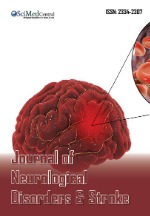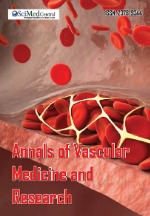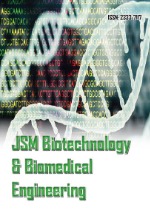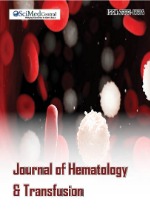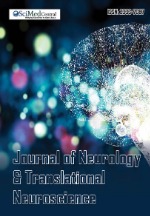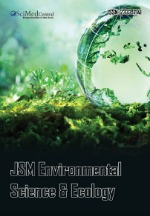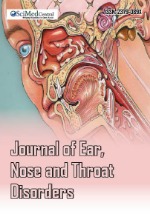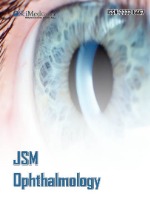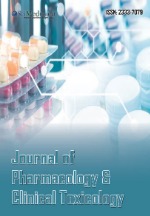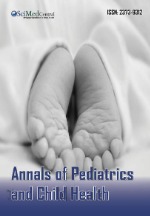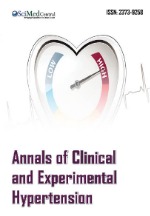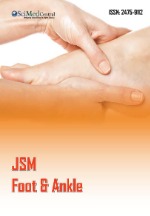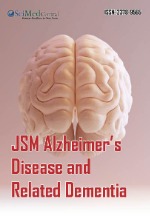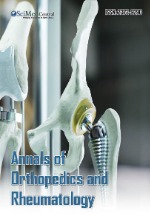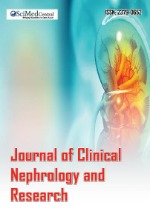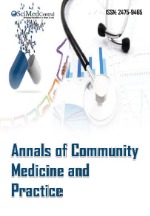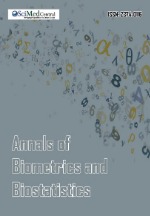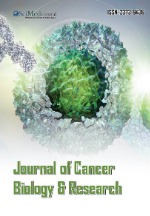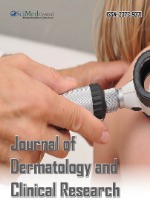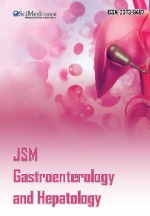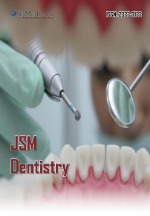Approaches to Reducing the Risk of Toxic Effects on the Population of Young Sheep
- 1. Kazakh National Agrarian University, Kazakhstan
ABSTRACT
This article presents the results of pathological-anatomical and histological features of organs and tissues of young sheep, studied from peasant farms of Karsakpayskiy county of Ulytau district in Karaganda region in the area of emergency falling of “Proton-M” expendable launch system, and after a possible heptyl intoxication of animals.
The authors conducted experiments to study the pathoanatomic and histological picture of organs and tissues of young sheep affected by asymmetric dimethylhydrazine (UDMH). This highly toxic fuel was spilled on the territory of the Karsakpai and Ulytau districts of the Karaganda region, Kazakhstan, due to the fall of the Proton-M rocket after an unsuccessful launch from the Baikonur cosmodrome in 2007. In the experiment, the study group consisted of 10 young sheep that grazed in the zone of possible poisoning with UDMH rocket fuel. The main objects of the study were histological preparations obtained from “fixed structures” - living and dead cells and tissues. Since the structures have a flat contrast and are poorly detected in a conventional light microscope, specially treated preparations were used. After preparation, the authors examined organs and tissues using a microscope, which allowed to reveal in detail the level of damage caused by intoxication of the obtained pathological materials (parenchymal organs and blood).v
KEYWORDS
- Young sheep
- Parenchymal organs
- Heptyl
- Intoxication
CITATION
Umitzhanov M, Omarbekova UZ, Imanbayev AA, Janabekova GK, Makhmutov AK, et al. (2022) Approaches to Reducing the Risk of Toxic Effects on the Population of Young Sheep. J Vet Med Res 9(1): 1225.
INTRODUCTION
To conduct post-mortem examination of young sheep of the current year of birth, 13 animals were slaughtered from seven peasant farms located in different distances (from 16 km to 60 km), from the site of impact.
Due to the high frequency of detection by scientists of postnatal pathology among children, during the study we increased the number of surveyed young sheep whose mothers grazed in time of emergency falling of expendable launch system in the area of impact of possible intoxication by inhalation or contact, especially flocks of Kenzhegulov S. and Orazbayev S. at highest risk of intoxication.
As a result the examination of organs and tissues of young sheep of the current year of birth (2009), we could not find visible macroscopic changes, regardless of the difference in the distance of farms from the place of impact, except for minor changes weakly expressed in the lungs of animals ( 5025, 5090, 6451, 5415 ), similar as in adult sheep slight capsule shriveling, color monotonicity, pink-reddish shades in both the outer side and at the cut and pathological signs of subacute lymphadenitis of individual animals [Figure 1-5]. As for the granulomatous changes that we identified in the liver section of the adults, were completely absent in young experimental and control groups, which is connected to biological characteristics of echinococcus in sheep and intactness by the eggs of parasites of Echinococcus in vivo.
Figure 1 Organs of young sheep 2009, 5415 from flocks of Kenzhegulov S. Macroscopic changes are absent.
Figure 2 Young sheep lungs from figure 1, there is no pathology.
Figure 3 The same sheep, the pathology is not detected..
Figure 4 Calve born in 2009, 5090.Flocks of Orazbayev.Organs do not have pathological changes.
Figure 5 The same sheep that in figure 3. The macroscopic changes are absent.
In young sheep (13 heads), histoarchitectonics in the liver was without remarkable change, much weaker than in adult sheep, and in some are missing at all.Pathological changes were characterized by manifestation, in the form of single microgranules and development of weak granular dystrophy, a local discomplectation, very seldom as a local necrosis and necrobiosis groups of cells, on the background of activation violation microcirculator the course or in isolated cases, in revascular area [Figure 6-8], of triads. However, it should be noted detectable degenerative-necrobiotic, some changes of local character, in our opinion, probably connected with post-anti- gene stimulation of immune organs.
Figure 6 Liver of young sheep 5415.General view, lymphohistiocytic proliferative interlobular and triads.
Figure 7 Detail to figure 6. Micro granuloma, a weak sinusoidal dilation. Granular degeneration of hepatocytes.
Figure 8 Liver of young sheep 6451 (shepherdYessenbayev T.). Granular degeneration of hepatocytes. The expansion of space of Disse, plasmorrhages in the sinusoids.
Changes occur in the lung tissue of young animals born in 2009 in 3 animals - were more pronounced, from a representative group, who were, at a short distance from the site of impact (flock of Kenzhegulov S.) [Figure 9,10]. They are characterized by a more pronounced thickening (80 x 157 mm), alveolar septa and distinctness of the fibrotic processes that indicate the chronic course of pathology. Besides, in bronchial tubes and bronchioles of lungs individual, and in some cases a plurality of polypoid outgrowths of the respiratory epithelium are detected. Outgrowths at some reached up to 600 microns long, 20 microns wide, at norm of 90 x 60 microns. In concerning to the epicenters of interstitial pneumonia emphysema were at highest portion (90 mm x 60 to 200 x 250 mm), at a rate of intact 30 x 30 microns. At the same time in 6 of them (5025 and 5090), these changes nere adopted as the provocative character of the changed areas in the zone of interstitial pneumonia with acute exacerbation of chronic processes. In terms of demonstration of productive – proliferative cellular reactionobserved in the peribronchial area - plasmocytic lymphoid cells and fibroblasts are not a large number. In other animals from this group of young sheep, held in more distant places during falling of the rocket, histoarchitectonics lung parenchyma presented with early display of modification of interstitial pneumonia.
Histological changes in lung parenchyma of young sheep of the current year of birth showed variability in the severity and types of interstitial pneumonia, the independence of the pathology of the distance areas (summering), where their mothers were held as part of the examined flocks. With this, the detection rates the significant frequencies of detection and more the severity of the proliferative - productive, interstitial pneumonia with processes fibrotization, accompanied by a sharp thickening of alveolar septa, and actively growing polyposis outgrowths of the respiratory epithelium of the bronchi and bronchioles with the process of chronicity.
The second type of pathology is weak desquamative - proliferative interstitial pneumonia mixed type with activation of hemodynamic instability, a weak diapedetic hemorrhage into the alveoli, the phenomenon of sludge and high plethora of microvasculature network, on the background of the old centers of proliferative - productive pneumonia [Figure 10].
The third type of pathology of lungs was characterized by small implication of a perbronchitis [Figure 10] which were followed at part of animals of local character or is lymphoid – plasmocytic and histolytic infiltrates and an insignificant hyperplasia lymphoid a follicle in a per bronchial connecting tissue at animals (5025, 5090, 6400, 6451, 6481).
The listed types of interstitial pneumonia not seldom were followed per focal and sometimes by extensive structural changes of an alveolar network of a parenchyma; emphysemas [Figure 9-12], atalektaza or distelektaza. At certain control animals, along with an intact histoarchitectonics parenchyma of lungs took place, also atelectatic character, poorly expressed changes.
Figure 9 Light exacerbation of chronic interstitial pneumonia. Focal peribronhit with cellular infiltrationperibronchial area.Polippoznal outgrowths of the mucous membrane of the bronchial tubes.
Figure 10 Detail of the details of the figure9. A marked thickening of the walls with signs of fibrosis.
Figure 11 Interstitial pneumonia, exacerbation of the process. Increased congestion and inflammation of serous alveoli young sheep 6713.
Figure 12 The same section that in figure 11. The stagnation of blood vessels in peribronchialtissue. Proliferation of cells of the respiratory epithelium.
Studying of the qualitative and quantitative parameters characterizing structurally – morphological and functional not full-values of the young, developing organism, especially at some illness, in the period of a post-natal ontogenesis, dictates about need of the differentiated approach to each criterion not only organ pathology, but also endocrine system, in particular a thyroid gland with a multifunctional orientation of action in an organism.
Studying condition of a histostructure of kidneys of animals, from S. Kenzhegulov and S. Orazbayev’s flock held at a short distance to a place of impact, there are found some changes of vascular disorder and serous and exudative and excretory malfunction of the glomerulotubular device. If at 5415 of young sheep detected a plethora of vessels and a diapedetic hemorrhage in cerebral substance with development, also extracapillary edema glomeruli, the cells which are followed by an atrophy with a pyknosis and intercellular substance and their excentric localization, a lapchatost in a cavity of a capsule of Shumlyansky [Figure 13,14].
Figure 13 Kidney of young sheep, 5415, KenzhegulovS., mother of which was in 17 km from the site of impact. Engorgement of blood vessels in the straight tubules and diapedetic hemorrhage.
Figure 14 Detail to figure 13. Totality necrobiosis and necrosis of the wall part of nephrons. Extracapillary serous edema, atrophy of the glomeruli.
Here, biometrics found significant reduction in size, the diameter of the glomeruli (8.75 mm), than the diameter of the glomerulus (12.5 microns). At the same time, an animal from the flock (5090), Orazbayeva S. changes differed from the previous one, the duration of the pathological process. In young 5090 traced swelling plasmorrhages, loosening, dystrophy reduction cells of capillaries and podocytes.In tubular network - granular dystrophy nephrons direct and convoluted tubules, desquamation and moderate apical part nephrocytes in their clearance, and urinary retention residual substrate and cell- detrital components, several fibrillarstructure. Perivascularly, it was observed in some cases, signs of serous edema. The diameter of histometry glomeruli and glomerular pointed out some of the features intracapillary process, which amounted to 13 x 12 mm and 12.5 x 11.2 mm [Figure 15-18].
Figure 15 Kidney of young sheep from the flock Orazbayev S., 5090. Saving vascular reaction in the glomeruli, perivascular edema (in bottom). Swelling of the glomeruli.
Figure 16 Detail to figure 15.Weak granular dystrophy with the activation process of repair and proliferation.In the lumen of the nephron residues fibrillar structure of matter. Loosening of the glomerular cells, the vagueness of its contours.
Figure 17 Kidney of young sheep 5090 (shepherd Orazbayev S.). Granular dystrophy with desquamation of the epithelium of nephrons in the medulla.
Figure 18 The same section that in figure 17. The total granular dystrophy nephrocytes kidneys and diapedetic hemorrhage.
In some animals ( 6612), found banded [Figure 19,20], sclerotic changes in the medulla with the development of granulation tissue at the site of the former hemorrhages (1100 x 140 mm). In other animals flocks located at a considerable distance from the point of impact, the changes were similar, but less pronounced.
Figure 19 Kidney of young sheep 6621. Development striped granulomas at the site hemorrhage, direct violation of excretory function of the tubules (the right side).
Figure 20 Detail to Figure 19. Early changesofnephrosclerosis (granulation tissue), the preservation of the vascular response in the area of the interstitium.
Scanning, histostructure of a thyroid gland the light optical device, numerous tireogramm showed in general, the uniformity, the detected changes at young sheep of representative groups of country farms, irrespective of their remoteness from a place of the last falling of components of launch system and the rocket itself.
Despite it, depending on some features of morphological and functional implications of structural units of a thyroid gland, animals of the second group were divided conditionally into two groups:
Among the first subgroup attributed regardless of age and gender characteristics ( 5025, 5090, 6451, 6480, 6621, 6713, 6727), of young sheep, the experimental group and the second subgroup - ( 6612, 6607). In tireogrammas of dominant in the number of young sheep observed heterogeneity of the follicle, a sharp decrease in the number of large or giant rounded, slightly smaller round-oval [Figure 21-23].
Figure 21 Thyroid 5090 (shepherd Orazbayev S). Postnatal ontogenesis able hyposecretion follicle.
Figure 22 Detail to Figure 21. Delamination from the basement membrane of thyrocytes desquamation and proliferation in the colloid.Hypofunction cancer.
Figure 23 Thyroid of young sheep in the late stages of postnatal ontogenesis. Homogeneous follicles are able to function well.
As a rule, the interfollicular zone is expanded with proliferating “C” - cells. The genesis of young follicle is rather more weakly expressed, or considerably activated, respectively, when in the field vision of microscope follicles of average size and in a stage formation a microfollicle depending on their age are enlarged.
A - colloid producing cells, were generally cubic, very rarely - low cubical. Formed follicles contain homogeneous eosinophilic- crowded basophilic fluid. As interpreted by morphological criteria characterize the morpho-functional activity and their normal histoarchitectonics postnatal ontogenesis. However, against the background of such normally occurring processes, more pronounced changes of histoarchitectonics is observedthat, that usually accompanied by disturbances in the microcirculatory hemodynamics sector thyroid gland and its functional activity in general. In this regard, it should be noted the colloid cosecreting condition of a folliculogenesis in new generation a microfollicle and activities quantitatively – the qualitative morphological parameters which are available mature a follicle. The stated criteria of the morphological characteristic took place in a thyroid gland of adult sheep, ewes and rams of producers.
In some cases, resulting in a total of serous swelling of the thyroid gland was found a local, sometimes diffuse parietal vacuolization with full or partial detachment from the basement membrane of thyrocytes slow uptake of the interfollicular tissue, the first principle is not big diapedetic liquid blood, plasma or serous edema later - in interfollicular liquid retaining the initial configuration of the follicle ( 5090).
In the thyroid gland in young sheep ( 6621, 5090, 6713), found abnormalities in violation of its histological structure. In such cases, some of them clearly were early vascular disorders, perforation of the wall, bleeding in the follicles and interfollicular area. Disturbance of the integrity of the interfollicular capillary network or later characterizes the local or total nature of the processes with infiltration of the interstitium and interfollicular tissue serous edema [Figure 24,25].
Figure 24 Thyroid of young sheep 6621. Hypersecretion follicle, slowing growth and development of young follicles.
Figure 25 Petail to Figure 24. Proliferate epithclial celles and their polymorphism and aggregation.
At the first option when a hemorrhage and a plasmorrhagia covering the mistorturately of zones and their microfollicle connects follicular liquid, causing a desquamation, a proliferation of cells of all types A, B, C.
They formed clumps, aggregation of their cells in large conglomerates, a different form in the form of plaques, to emergence of the isolated cells with hyperchromatic fine and large cores in among a follicular colloid and a blood gumor (formulated elements and plasma). Besides, as the main structurally – functional unit follicles lost contours, there was no its basal membrane, and conditions for entering of colloid liquid in a blood channel and augmentation of hormones in the circulating blood [Figure 25] were framed.One of features of this pathology is that it is strongly expressed on separate sites with a residual folliculogenesis or in glands with the dominating i.e. less mature folliculogenesis of an interstition.
In our opinion, such phenomenon, in the final plan, destabilize uniform entering of hormones, to disturbance regulatory multi - functional properties of a thyroid gland in an organism. Structural changes of the adrenal glands in young sheep did not differ from the changes in adult sheep [fig.26, 27]. Reproductive organs (testes) of 2 males of young sheep ( 5415, 5025), were presented in the developmental stages of postnatal ontogenesis.
Figure 26 Adrenal of young sheep 6713 external-organ tissue.
Figure 27 Detail to figure 26. Beam area, discomplection of loosening, expansion of cells and small plazmoragy.
Architectonics convoluted tubules did not reach the levels of development to gender and age, and were limited to one or two in-line cells [Figure 29]. Comparison of histological structures of a genitiala of males showed about similarity with changes of spermaries, adult animals of the first group in which found a weak serous edema of a quaggy connecting tissue in an interstation of a parenchyma [Figure 28,29].
Figure 28 Testis of young sheep, 5415 (sheep herd Kenzhegul S.).Expressed serous swelling, loosening of the connective tissue interstitium. Tightness tubules serous fluid.
Figure 29 Detail to figure 28. Convoluted tubules in a state of postnatal ontogenesis, not formed Physiological and morphological structure.
omechanges in immune organs and tissues of sheep with subacute productive processes splenita and lymphadenitis in sheep surveyed were predominantly young residual benign processes occurring vaccine, more distant backgrounds of vaccine “Aftovak” s and relatively close counter anthrax vaccine STI [Figure 30,31].
Figure 30 Spleen of young sheep 5415 (sheep herd Kenzhegul S.), after antigenic stimulation, macrophage plasmocytic and hyperplastic reaction.
Figure 31 Detail to figure 30. Enlightened reactive center (above), lower shaft of lymphocytic T-cells (middle) and red pulp (in the bottom).
The latter were moderate hyperplasia of individual immune structures, accompanied by a pronounced macrophage reaction red pulp of the spleen. In some cases, there is the extinction of macrophage - a weak prolongation plasmocytic activity of lymphocytes. In dependent areas, against the background of the variable manifestations of small focal or diffuse lymphocyte young sheep affected by asymmetric dimethylhydrazine (UDMH, heptyl). This highly toxic fuel was spilled on the territory of the Karsakpai district of the Ulytau district of the Karaganda region as a result of the fall of the Proton-M rocket after an unsuccessful launch from the Baikonur cosmodrome in 2007 [1]. The experiment was conducted in 2018. Five sheep and 5 young sheep (aged one-year-olds), were examined, which grazed in the zone of possible poisoning with UDMH rocket fuel. The main stages of cytological and histological analysis were the selection of the object of study, its preparation for microscopic examination, the use of microscopic research methods, as well as qualitative and quantitative analysis of images [2].
The objects of the study were parenchymal organs (blood), prepared in advance by a pathologist for examination and obtained as a result of light and electron microscopy. The main purpose of the study was histological preparations obtained from fixed structures. Samples can be an imprint (for example, from the spleen, thymus, liver), a film of tissue (for example, connective tissue or peritoneum, pleura), and a thin section [3]. The authors selected ultrathin sections of parenchymal organs (areas of tissues and internal organs), for the experiment (liver, lungs, thyroid gland). Histological preparations can be studied without special treatment [4]. But due to the fact that the structures have a flat contrast, they are poorly detected in a conventional light microscope, and the use of special microscopes (phase contrast, etc.), is required. Therefore, specially treated preparations are more often used, i.e. fixed, immersed in a solid medium and colored. The histological preparation manufacturing process included the following main stages: sampling and fixation of the material, compaction, cutting of sections, staining or contrasting of sections [5,6]. After preparation, the authors studied the organs and tissues using a microscope. Microscopy allows you to examine an object at the cellular level to determine the level of exposure to organs. Microscopy can be light and electron microscopy. Light microscopy can be performed in transmitted light, when light passes through a thin transparent histological preparation, or in reflected light, when, for example, a thick or opaque object is examined. Similarly, electron microscopy can be transmission microscopy, when an electron beam passes through an ultrathin section under study, or scanning microscopy or scanning microscopy, when an electron beam is reflected from the surface of the object under study. The authors studied the tissues and organs of young sheep, which made it possible to reveal in detail the level of damage caused by intoxication [7].
Results of sectional and histological research on detection rate organ pathology of young sheep, the second group in the area of possible intoxication heptyl, after the fall of emergency rocket “Proton-M” are presented in [Table 1].
|
Table: 1 Data section and histological studies of young sheep (II group), grazed in the area of emergency falling rocket "Proton-M". |
||||
|
Name of pathology organs and tissues |
Small cattle (young sheep) |
|||
|
Number of investigated |
Number of sick animals |
Percentage (%) |
||
|
± |
m± |
|||
|
1 |
2 |
3 |
4 |
5 |
|
Hydatid disease of the liver: a) cystic stage |
13 |
- |
- |
|
|
b) calcified and small foci |
13 |
- |
- |
|
|
Hydatid disease of lungs: a) cystic stage |
13 |
- |
- |
|
|
Interstitial pneumonia: |
13 |
4 |
30,7 |
13,3 |
|
Liver granulomatosis: a) multiple granulomas with necrosis, giant cell Pirogov Langhans and foreign body. |
13 |
- |
- |
|
|
b) individual granulomas without necrosis |
13 |
8 |
61,5 |
14,05 |
|
c) the degeneration of hepatocytes and necrobiosis |
13 |
11 |
84,6 |
10,4 |
|
d) expansion of the sinusoids. The deposition of fibrillar material in them. |
13 |
5 |
34,5 |
13,7 |
|
Interstitial pneumonia: a) small focal, diffuse |
13 |
3 |
23,0 |
12,1 |
|
b) macrofocal, diffuse |
13 |
11 |
84,6 |
10,4 |
|
c) peribronhit with lymph follicles |
13 |
8 |
61,5 |
14,05 |
|
g) peribronhit with lymph Gist-proliferative tsitarnym |
13 |
8 |
61,5 |
14,05 |
|
d) polypoid growths respiratory epithelium of the bronchioles |
13 |
5 |
34,5 |
13,7 |
|
Subacute glomerulonephritis: |
|
|
|
|
|
a) intracapillary edema and glomerular plasmorrhages |
13 |
10 |
77,0 |
12,1 |
|
b) extra capillary edema and glomerular plasmorrhages |
13 |
9 |
69,2 |
13,3 |
|
c) glomerular necrosis |
13 |
8 |
61,5 |
14,05 |
|
d) degeneration, necrobiosis and necrosis of neurons |
13 |
9 |
69,2 |
13,3 |
|
e) necrosis unresponsiveness |
13 |
8 |
61,5 |
14,05 |
|
f) banded proliferative |
13 |
9 |
69,2 |
13,3 |
|
g) hyperemia and hemorrhage diapedetic |
13 |
4 |
30,7 |
13,3 |
|
h) cylinders in the lumen of the convoluted and straight tubules (with tissue detritus) |
13 |
9 |
69,2 |
13,3 |
|
Thyroid gland:the follicles of different sizes containing a colloid of different viscosity and quantity |
13 |
8 |
61,5 |
14,05 |
Analysis and synthesis of histological changes criteria pathologists of young sheep are presented in [Table 2]. In general, their appearance showed stereotypy as that of the first group of adult animals. As noted in thus group of animals except for interstitial pneumonia macroscopic changes in their bodies are not installed. High percentages of morphological criteria revealed granulomatous inflammation of the liver, without necrosis in the center of (61,5 ± 13%), with dystrophic-necrobiotic changes of hepatocytes (84,6 ± 10,4%). A similar situation can be noted in the number of pathological features of the pathology of interstitial pneumonia with macrofocaldefeatseptuminteralveolare partitions (84,6 ± 13,3%), as well as peribronchitis (61,5 ± 14,05%).
It is advisable to specify a list of indicators of morphological and functional disorders in glomerular-tubular apparatus of kidneys in young sheep, so that the detection rate of glomerular pathology in the sector with the development of an extra (69,2 ± 13,3%) - and intercapillaryedema (77 ± 12,1%), tubular section - dystrophy and necrobiosis (69 ± 13,3%), sclerotic - necrotic changes (69,2 ± 13,3%), which was accompanied by a vascular disorder and delay of excreta in the tubules. A certain proportion among animals had structural pathology thyroid disorders (61,5 ± 14,05%). Studying in comparative terms the pathological, histological and biometric studies of adults and young sheep from the zone of possible intoxication propellant present aggregate data on static detection processing of morphological criteria of organ pathology by age groups of animals, the results are shown in [Table 2].
|
Table 2 Comparative analyses of the results sectionional and histological findings in adult animals and young sheep experimental groups in the area of emergency falling rocket "Proton-M". |
|||||||
|
Name of pathology organs and tissues |
Sheep of experimental group (adults and juveniles) |
Sheep of control group |
Signifi-cant differen-ces by t-test |
||||
|
Total |
Number of sick animals |
M±m,% |
Total |
Number of sick animals |
M±m,% |
||
|
Sections` changes |
|
||||||
|
Hydatid disease of the liver |
20 |
4 |
20,0 ± 9,2 |
5 |
- |
0 ± 43,4 |
t=0.5 p>0,05 |
|
Hydatid disease of the lings |
20 |
1 |
5,0 ± 5,0 |
5 |
- |
0 ± 43,4 |
t=0.1 p>0,05 |
|
Histological changes |
|
||||||
|
Liver granulomatosis: |
20 |
14 |
70,00 ± 10,5 |
5 |
1 |
20,0 ± 20,0 |
t=2.2 p <0,05 |
|
Dystrophy and necrobiosis of hepatocytes |
20 |
17 |
85,0 ± 8,2 |
5 |
1 |
20,0 ± 20,0 |
t=3,0 p>0,01 |
|
a) Extension of sinusoids. The deposition of fibrillar material in them. |
20 |
7 |
35,0 ± 10,9 |
5 |
- |
0 ± 43,4 |
t=0,8 p>0,05 |
|
Interstitial pneumonia: |
20 |
18 |
90,0 ± 6,7 |
5 |
1 |
20,0 ± 20,0 |
t=3,3 p<0,001 |
In [Table 2], which presents an analysis totals statistical processing of materials received organ pathology two experimental groups and the control animals. When comparing them to those of other two tables there is identity and uniformity of pathological changes and their level of quantitative indices of groups of animals with no large fluctuations. Accordingly, the highest frequency of detection of pathology observed in the liver with high confidence (p <0,01, a value of t = 3,0), like other groups as a result of activation of dystrophic - necrobiotic changes in hepatocytes in the liver parenchyma manifestation microgranules without necrosis (with reliability of p <0,05, a value of t = 2,2), intra- and extralobularlocalization. Quite high rate in number and percentage remains interstitial pneumonia remains with certainty p <0,001, a value of t = 3,3. In addition, exudative processes and probably early vascular disorders contributed to the development in a significant number of animals subacute glomerulonephritis, which is confirmed with certainty p <0,01, a value of t = 2,7.
The fundamental factor in determining the health of humans and animals is their environment, the quality of which largely depends on human activity. Primarily, this is due to the fact that developing techno sphere creates the risk of emergencies, which are commensurate with the scale of the environmental and natural disasters. In recent years, increased the number of emergency-related activities of the cosmodrome “Baikonur”, as a result of accidents rockets [8-10].
Currently, in many countries around the world attaches great importance to the study of the propagation and manifestations of pathological states under the influence of chemical factors of an exogenous nature. Among the hydrazine derivatives can be attributed to which the possibility of contact of humans and animals in the development of emergency. Unsymmetrical dimethyl hydrazine (UDMH), or heptyl and its derivatives are extremely toxins in animals and humans, causing acute and chronic forms of intoxication with a primary lesion of the central nervous system, liver, kidneys, immune and hematopoietic systems, metabolic disorders, as well as other organs; established its mutagenic and carcinogenic properties. Hydrazine derivatives are dangerous for any route of exposure. They have the ability to induce specific long-term effects and, in particular, in animals to induce tumors in various organs and tissues.
During the examination of persons residing in the vicinity of the impact of space-rocket activity is detected in the blood reticulocytosis with a tendency to anemia, leukopenia, and changes in terms of immunity. In the bone marrow, there was some increase in myelopoiesis with predominant activation of erythropoiesis. In addition, it noted the development of chronic bronchitis, erosive and ulcerative lesions of the stomach, degenerative changes of the myocardium, toxic nephropathy.
That is why it is important to assess the state of health of livestock grazing in the vicinity of the accident launch vehicle, when a high probability of contamination of pastures rocket fuel and the products of its transformation. Similar studies to date have not been conducted. Therefore, we had to study [11-13] in hematological parameters of the health of domestic animals grazed in the area of the Strait of possible components of rocket fuel in the rocket accident that occurred in 2007.
To achieve this objective studies to determine the possibility area soil and plant components of rocket fuel after the accident rocket “Proton-M” September 6, 2007 in Karsakpay rural district Ulytau district of the Karaganda region in view of the flight path, the crash site of the rocket, scatter fragments, the wind rose, etc. Some of the animals during the fall rocket contained on the summer pastures (flock “Kenzhegulova S.” and “Orazbekov S.”), at a distance of 15-16 km from the epicenter of the explosion and flash during the fall of the fragments of the rocket. The rest of the flock is at a distance of 40 to 60 km downwind, in a westerly direction. The closest to the accident site were located farms “Orazbekov S.” “Kenzhegulov S.”, “Museev T.”, “Tatagulov S.”. Before the implementation of the planned research highlighted a representative group of animals grazing on areas of possible contamination with propellant components (3 seats fall of large parts of the launch vehicle), based on survey data from farms shepherds “Orazbekov S.”, “ Kenzhegulov S.”, “Museev T.,” “ Tatagulov S. “. Studied the epizootic situation in the region studied by the analysis of veterinary reports for the last two years, and a survey of local shepherds about the nature of diseases and death of animals. Whole blood samples for hematological study - 50 heads of cattle and 50 head of sheep and goats (IFAs) have been investigated in the test laboratory of the Karaganda regional branch of the State Enterprise “Republican Veterinary Laboratory” Committee of state inspection in the agricultural sector of the Ministry of Agriculture of the Republic of Kazakhstan. This laboratory is accredited. The study was conducted in the summer of 2009 in the rural district KarsakpayUlytau district of the Karaganda region. Compiled an inventory of the collection of blood of farm animals with the name of the owner of the animal, the inventory numbers of the animal, its age.Taking a blood sample in each case, certified by the signature of the owner. Blood tests include the identification and counts and erythrocyte sedimentation rate.
Clinical examination of animals subjected to the 9 p/f “Mamakov S.” (summer pasture “Aschyly”), “Kenzhegulov S.” (summer pasture “Kumuygen”), “Kenzhegulov S.” (summer pasture “Uzakbai-1”), “Orazbekov C “(summer pasture” Uzakbai-2 “),” Tlemisov T. “(Wintering” Zharyk “),” Orazbekov S. “(Wintering” Almombet “),” Azhibaev K. “(Wintering” Togyzbay “),” BolendinZh “(Hut LMZ),” Kalkanbaev Z. “(Wintering” Boget-3 “), the experimental animals from flocks” Kenzhegulov S. “ “Orazbekov S.”,” Tlemisov T.”,”Azhibaev K.” “ Yessenbayev T. “, “ Tatagulov A.”, “Karabayev M.” and “Kenzhebaev.” The survey data and questionnaires to assess the status of domestic animals of the above to p/f Karsakpay rural district Ulytau district Karaganda region showed that in 2009 not seen congenital anomalies in offspring. There were animals that died from an unknown illness. Tumors of slaughtered animals have been detected. Not recorded animal poisonings. The results of the clinical examination are shown in Table 3.
|
Table: 3 Results of clinical examination of the health of pets. |
|||||
|
|
Farms location |
Summer pasture |
Examined Number of animals |
Number of animals |
Heads physiological deviations |
|
1 |
"Mamakov" |
«shyly» |
Horses |
15 |
no |
|
Dogs |
3 |
no |
|||
|
2 |
«"Kenzhegulov"» |
«Kumuygen» |
Cattle |
7 |
no |
|
Small cattle |
42 |
no |
|||
|
Horses |
1 |
no |
|||
|
3 |
«Kenzhegulov» |
«Uzakbai -1» |
Cattle |
2 |
no |
|
Small cattle |
45 |
no |
|||
|
4 |
«Orazbekov» |
«Uzakbai -2» |
Cattle |
2 |
no |
|
Small cattle |
19 |
no |
|||
|
5 |
«Tlemisov» |
Wintering «Zharyk» |
Cattle |
1 |
no |
|
Small cattle |
25 |
no |
|||
|
Horses |
1 |
no |
|||
|
6 |
«Orazbekov» |
Wintering «Almom-bet» |
Cattle |
1 |
no |
|
Small cattle |
20 |
no |
|||
|
Horses |
2 |
no |
|||
|
7 |
«Azhibaev» |
Wintering «Togyzbay» |
Cattle |
6 |
no |
|
Small cattle |
9 |
no |
|||
|
Horses |
1 |
no |
|||
|
8 |
«Bolendin» |
Country house LMZ |
Cattle |
5 |
no |
|
Small cattle |
18 |
no |
|||
|
Horses |
2 |
no |
|||
|
|
|
|
Dogs |
1 |
no |
|
9 |
«Kalkanbaev» |
Wintering «Boget -3» |
Cattle |
2 |
no |
|
Small cattle |
78 |
no |
|||
|
|
|
|
Horses |
4 |
no |
|
|
|
|
Dogs |
1 |
no |
From the data table shows that all examined 26 heads of horses, 26 head of cattle, 256 sheep and 5 dogs. The deviations from the physiological standard are not revealed. At the same time, the words of the shepherds, says that in windy conditions, many animals begin to cough. Thus, in p/f “Kenzhegulov S.” and “Tatagulov S.” animals were discovered respiratory diseases, gastro-intestinal tract; in p/f “Museev”, p/f “Yessenbayev” p/f “Seitov” p/f “Kenzhebaev” and p/f “Mamakov” - respiratory diseases, and p/f “Orazbayev” and p/f “Karabayev” disease of the gastrointestinal tract. Table 4 shows that the cattle 27 (54.0 ± 7.0%) samples corresponded leukocytes physiological standard; 22 samples (44.0 ± 7.0%) detected leukocytosis; in the 1 st (2,0 ± 1,9%) sample - leukopenia.
|
Table: 4 Results of hematological studies in domestic animals in farms Karsakpay rural district Ulytau district of the Karaganda region. |
||||||
|
|
Name of peasant farms |
Location |
Type of livestock |
Taking samples of blood from the animals, heads |
Physiologi-stscal standards |
Note |
|
1 |
«S.Orazbekov» |
Summer pasture «Uzakbai 2» |
Cattle |
10 |
Erythrocytes |
Erythrocytosis(1sample); Leukopenia (1sample);Leukocytosis (2samples). |
|
Leukocytosis |
||||||
|
Small cattle |
10 |
Erythrocytes |
- Leukocytosis (3samples). |
|||
|
Leukocytosis |
||||||
|
2 |
«S.Kenzhegulov» |
Summer pasture «Kumuygen» |
Cattle |
13 |
Erythrocytes |
Erythrocytosis (1sample);Leukocytosis (6samples). |
|
Leukocytosis |
||||||
|
Small cattle |
13 |
Erythrocytes |
Erythrocytosis (1sample);Erythropenia(2sa mples); Leukocytosis(7samples); Leukopenia (1sample). |
|||
|
Leukocytosis |
||||||
|
3 |
«T.Museev» |
Wintering "Byten" |
Cattle |
9 |
Erythrocytes |
Erythrocytosis (1sample); Erythropenia (1sample); Leukocytosis(5samples). |
|
Leukocytosis |
||||||
|
Small cattle |
9 |
Erythrocytes |
- Leukocytosis (2samples). |
|||
|
Leukocytosis |
||||||
|
4 |
«S.Tatagulov» |
Summer pasture«Karashin» |
Cattle |
18 |
Erythrocytes |
Erythrocytosis (1sample);Erythropenia (3samples); Leukocytosis (7samples). |
|
Leukocytosis |
||||||
|
Small cattle |
18 |
Erythrocytes |
- Leukocytosis (3samples). |
|||
|
Leukocytosis |
||||||
|
TOTAL: |
4 |
|
100 |
|
|
|
In 42 samples of cattle (84,0 ± 5,2%) deviations from the physiological standard in the number of red blood cells are not found; in 4 samples (8.0 ± 3.8%) - erythrocytosis; in 4 (8,0 ± 3,8%) - erythropenia (physiological norm in cattle blood: red blood cells - 7.5 million / ml, leukocytes - 9.5 thousand / l, at the IFA: erythrocytes - 9.5 million / L, white blood cells - 10 thousand / ml). Of the 50 blood samples taken from the IFA, 34 blood samples (68,0 ± 6,6%) deviations from the physiological standard in the number of white blood cells are not found; 15 samples (30.0 ± 6,5%) - leukocytosis; 1 sample (2,0 ± 1,9%) - leukopenia. Red blood cell count was within the physiological range of 47 samples (94.0 ± 3,3%); in the 1 st (2,0 ± 1,9%) sample - polycythemia; 2 samples (4,0 ± 2,8%) - erythropenia.
It was found that cattle percentage of normal results (number of red blood cells and white blood cells within the physiological standard) is less than that of sheep and goats, but the differences did not reach statistical significance (54,0 ± 7,0% and 68,0 ± 6 , 6%, t = 1.45, p> 0.05), as well as differences in the percentage of leukocytosis. According to hematological studies of cattle on the farm “Orazbekov S.” (summer pasture “Uzakbai-2”), of the 10 blood samples in set 2 leukocytosis, 1 - leukopenia and 1 - polycythemia. Indicators of blood cells in the remaining 6 goals were within the physiological standard. As a result, hematological studies of small cattle of the same farm, noted that the 3 ewes found leukocytosis. Indicators of blood cells in the other 7 goals were within the physiological norm.
When hematological study of cattle on the farm “Kenzhegulov S.” (summer pasture “Kumuygen”), was detected in 6 of 13 cows - leukocytosis and 1st - polycythemia. Indicators of blood cells in the remaining 6 goals were within the physiological norm. The results of research of hematological blood of sheep and goats on the farm “Kenzhegul S.” (summer pasture “Kumuygen”), as follows: of the 13 blood samples from 7 sheep revealed leukocytosis, from 1st - leukopenia, from 1st - erythropenia. In terms of blood cells in the remaining 4 heads of deviations from the physiological norm is not revealed.
In hematological studies of cattle on the farm “Museev T.” (Wintering “Byten”), found that 9 out of the blood samples found in 5 cases, leukocytosis in the 1st - polycythemia and in the 1st - erythropenia. Indicators of blood cells in the remaining 2 goals were within the physiological standard. In the study of the blood of sheep and goats on the farm “Museev T.” (Wintering “Byten”), found in samples from 9 2 was leukocytosis. Indicators of blood cells in the other 7 goals were no deviations from the physiological norm. Hematologic study of cattle on the farm “Tatagulova S.” (Summer pasture “Karashin”), showed that of the 18 blood samples in 9 cases, there is leukocytosis, 2 - 2 and polycythemia - erythropenia. Indicators of blood cells from the rest of the 5 goals were within the physiological norm.
According to the results of hematological study of sheep and goats on the farm “Tatagulova S.” (Wintering “Byten”), found that of the 18 blood samples in 3 cases was leukocytosis. Indicators of blood cells in the remaining 15 goals were no deviations from the physiological norm. It was found that the percentage of leukocytosis, indicates the presence of inflammatory diseases are relatively high: they ranged from 25,0 ± 9,9% in the animals of the farm “Orazbekov S.” to 50,0 ± 10,0% animal farm “Kenzhegulov FROM.”. Despite the two-fold difference differences do not reach statistical significance (t = 1.77, p> 0.05). The correlation analysis between the percentage of leukocytes and the distance from the collective farm areas most contaminated with propellant components (the crash site the top of the upper stage and spacecraft transfer compartment, place falling booster “Briz-M”), found no connection. Thus, in the studied farms were seen congenital anomalies in offspring. Not mentioned among the studied animals that died from an unknown illness. Tumors from slaughtered animals are not revealed, nor recorded poisonings among them. The results of hematological studies a significant number of animals more frequently in cattle, found in descending order leukocytosis, polycythemia, erythropenia and leukopenia. It is noted that there are differences in the percentage of violations in the blood of individual farmers. The biggest disadvantage - half of the animals according to a study of hematological evidence of inflammation - found on the farm “Kenzhegulov S.”. But even the lowest percentage of diagnosed pathologies - a quarter of the animals on the farm “Orazbekov S.” with leukocytosis, as a symptom of an inflammatory disease.
Any organism, in accordance with the genotype even in the presence of extreme conditions has the ability to maintain the constancy of homeostasis. Obviously, therefore haematological parameters of different systems are stable, being exposed to the external environment under the influence of a modification variability, which manifests itself in minor deviations from the norm. In hematology significantly affected not only the physiological condition of the animal (age, pregnancy, productivity), but also the conditions of feeding, maintenance, operation, and habitat.
Blood picture has its own individual and specific features. However, when hematological studies oflargeand small cattlein 4 farms (“Orazbekova S.” “S.Kenzhegulov”, “Museev T.”, “Tatagulova S.”) established a high percentage of leukocytosis: 25, 0 ± 9,9% in the R / V “Orazbekov S.” to 50,0 ± 10,0% in a / v “Kenzhegul S.”. In 6 cases (6,0 ± 2,4%) erythropenia identified in 5 (5,0 ± 2,2%) polycythemia, in 2 (2,0 ± 1,4%) - leukopenia.
Not applicable correlation between the percentage of animals with leukocytosis, and the distance from the highest point of contamination with propellant components and arrangement of the collective farm.
Hematologic studies revealed a high percentage of leukocytosis as an indicator of inflammation, available in animals grazed in the area of detection of contamination components of rocket fuel after the accident, “Proton-M” September 6, 2007. It was found that among the cattle had polycythemia from 5.6% to 11.2%; erythropenia - from 11.2% to 16.7%; leukocytosis from 20% to 55.6%; leukopenia - up to 10%. Among the cattle polycythemia was found in 7.7%; erythropenia - 15.4%; leukocytosis - from 16.7% to 53.9%; leukopenia - up to 7.7%. This indicates trouble in the examined flocks. It’s hard to say about the causes of the identified facts. For answers to questions about the localization of the inflammatory process in animals and about its etiology, further studies are needed.
GENERALIZATION AND CONCLUSIONS
The authors conducted sectional and histological studies of the frequency of detection of organopathology in young sheep in the zone of possible intoxication with asymmetric dimethylhydrazine after the fall of the «Proton-M rocket». At the same time, a high percentage of morphological criteria was established, granulomatous inflammation of the liver was detected, without necrosis in the center (61.5 ± 13%) with dystrophic-necrobiotic changes in hepatocytes (84.6± 10.4%). A similar situation can be noted in a number of pathological features of the pathology of interstitial pneumonia with macrofocal lesions of the interalveolar septa (84.6 ±13.3%), as well as peribronchitis (61.5±14.05%).
It is advisable to clarify the list of indicators of morphological and functional disorders in the glomerular-tubular apparatus of the kidneys in young sheep in order to increase the frequency of detection of glomerular pathology in the sector with the development of additional (69.2 ± 13.3%) - and intercapillary edema (77 ± 12.1%), tubular department - dystrophy and necrobiosis (69 ±13.3%), sclerotic-necrotic changes (69.2 ± 13.3%), which was accompanied by vascular disorder and delayed development of discharge in the tubules. A certain proportion of animals had a structural pathology of the thyroid gland (61.5 ± 14.05%).
When comparing them with the data of the other two tables, there is an identity and uniformity of pathological changes and their level in quantitative indicators of animal groups without large fluctuations. Accordingly, the highest frequency of pathology detection is observed in the liver with high confidence (p <0.01, t = 3.0), as in other groups as a result of activation of dystrophic- necrobiotic changes of hepatocytes in the liver parenchyma with the manifestation of microgranules without necrosis (with confidence p <0.05, t = 2.2) intra- and extralobular localization.
A fairly high indicator of the number and percentage of remaining interstitial pneumonia persists with a confidence of p <0.001, the value of t = 3.3. In addition, exudative processes and probably early vascular disorders contributed to the development of subacute glomerulonephritis in a significant number of animals, which is confirmed with a confidence of p < 0.01, the value of t = 2.7.
In addition to young sheep, 26 horses, 26 cattle, 256 sheep and 5 dogs were examined. There were no deviations from the physiological norm.
Thus, in the studied farms, congenital anomalies were observed in the offspring. It is not mentioned among the studied animals that died of an unknown disease. No tumors were detected in the killed animals; no poisoning was recorded among them. According to the results of hematological studies in a significant number of animals, more often in cattle, leukocytosis, polycythemia, erythropenia and leukopenia are found in descending order. It is noted that there are differences in the percentage of disorders in the blood of individual farmers.
The biggest drawback - half of the animals showed signs of inflammation according to hematological research - was found on the farm “Kenzhegulov S.”. But even the lowest percentage of diagnosed pathologies is a quarter of the animals on the farm “Orazbekov S.” with leukocytosis as a symptom of an inflammatory disease. Any organism, according to the genotype, even in the presence of extreme conditions has the ability to maintain the constancy of homeostasis.
The blood picture has its own individual and specific features. However, during hematological studies of large and small cattle in 4 farms (“Orazbekova S.”, “Kenzhegulov S.”, “Museev T.”, “Tatagulova S.”), a high percentage of leukocytosis was established: from 25.0±9.9% in “Orazbekov S.” to 50.0±10.0% in “Kenzhegul S.”. In 6 cases (6.0±2.4%) erythropenia was detected in 5 (5.0±2.2%) polycythemia in 2 (2.0 ± 1.4%).
Hematological studies revealed a high percentage of leukocytosis as an indicator of inflammation in animals grazing in the detection zone of contamination with rocket fuel components after the Proton-M accident on September 6, 2007. It was found that polycythemia was observed among cattle from 5.6% to 11.2%; erythropenia - from 11.2% to 16.7%; leukocytosis - from 20% to 55.6%; leukopenia - up to 10%. Among cattle, polycythemia was found in 7.7%; erythropenia - 15.4%; leukocytosis - from 16.7% to 53.9%; leukopenia - up to 7.7%.
This indicates problems in the examined herds. It is difficult to say about the reasons for the revealed facts. Further research is needed to obtain answers to questions about the localization of the inflammatory process in animals and its etiology.
REFERENCES
- Zhubatov J, Permenov Yu.G, Alekseev D.S. The results of work on the program “Assessing the impact of launch vehicles from commodore Baikonur”on the environment. The results of the implementation of programs to assess the impact of launches rockets from the commodore “Baikonur” on the environment and human health. Scientific and practical Conference, 27-29 June. 2006; 41.
- Nurtazin SG, Zharkov IM, Nurusheva AM. Histological examination of the internal organs of mice with acute intoxication heptyl//The results of implementation of programs to assess the impact of launching rockets from the cosmodrome “Baikonur” on the environment and human health. Proceedings of the conference. 2006; 94: 27-29.
- Bratkov AA, Seregin EP, Gorenkov AF. Hematology of rocket and jet fuels. Moscow, Rhimiya. 1987.
- Angell JW, Grove-White DH, Duncan JS. Sheep and farv level factors associated with footrot: a longitudinal repeatd cross-sectional study of sheep on six farms in the UK. 2018; 182: 293.
- Back KE, Thomas AJ. Amer Industr Hyg Assoc Journal. 1963; 24: 23-27.
- Nauryzbaev MK, Batyrbekova SI, Tasibekov HS, Kalugin SM. The study of the dynamics of the fall of MCT in the environment exposed to rocket and space activities and environmental impact assessment starts RN in areas falling RON RN//The results of implementation of programs to assess the impact of launching rockets from the cosmodrome “Baikonur” on the environment and human health. Scientific and Practical Conference. 2006; 80: 27-29.
- Simonyan GA, Khisamutdinov FF. Veterinary hematology- Moscow “Kolos”. 1995; 102-105.
- Ioffe BV, Kuznetsov MA, Potekhin AA. Hydrazine organic derivatives chemistry- Leningrad. 1979; 224.
- Zrelov VN, Seregin EP. Liquid propellant- Moscow, Chemistry. 1975.
- Internet - Newspaper GAZETA. KZ on April 17, 2009.
- Ioffe BF, Kuznetsov MA, Potekhin AA. Chemistry, organic derivatives of hydrazine - L: Medicine, Chemistry, 1979; 65.
- Gorshtein ES, Kopylova TN. Effect of hydrazine hydrochloric acid on the hepatic microsomal hudroxylation system of rats. EKSP. 1983: 15: 22-26.
- Muravleva LE, Kalinich EA, Tritek VS. Nucleic acids characteristic of the spectrum of white blood cells of people living in the sphere of influence of the cosmodrome “Baikonur”. Bulletin of the University. 2001; 21: 217-218.

































